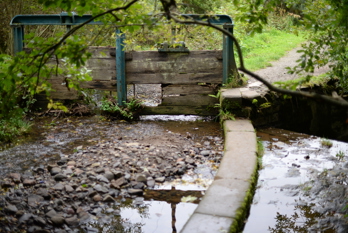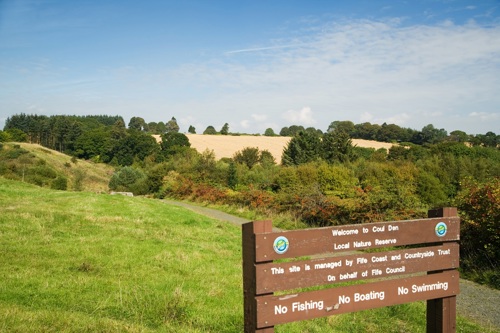Why restore the Back Burn?
 The Back Burn has been affected by many man-made changes over time. These include artificial narrowing and straightening of the burn with gabions (wire baskets filled with stones) and walls, as well as barriers within the burn, such as weirs.
The Back Burn has been affected by many man-made changes over time. These include artificial narrowing and straightening of the burn with gabions (wire baskets filled with stones) and walls, as well as barriers within the burn, such as weirs.
Restoring water courses to a more natural condition can bring many benefits, helping to:
- provide a space for local people to enjoy;
- improve local resilience to climate change;
- support biodiversity;
- reduce flood risk, for instance through natural flood management;
- gain space for nature in a more urban environment.
What is the aim of the project?
To investigate the potential to restore 5.8 kilometres of the Back Burn to a more natural state between Rhind Hill in the Lomond Hills and Newton, north of Markinch. We are also looking to improve local biodiversity and develop the area with local communities.

Who is undertaking this project?
In conjunction with other initiatives in the Leven Programme, this project has been commissioned by Fife Council and the Scottish Environment Protection Agency (SEPA) and is being managed by Fife Coast and Countryside Trust (FCCT), supported initially with funding from the Water Environment Fund (WEF).
cbec eco-engineering have been appointed as technical designers for this project and have been working with Fife Council, SEPA and Fife Coast and Countryside Trust (FCCT) to finalise the restoration design options that were shared via public consultation in November 2023.
What is happening at the moment?
We are in the final design stage of the project, which has included site surveys, modelling, and securing relevant planning and permissions for the works to take place. We have also been engaging with local landowners and technical stakeholders.
Restoration works will begin Summer 2025, with a focus on improvements at Coul Den and Balbirnie Park.
Coul Den:
- Restoring the original watercourse while preserving the historic blue sluice gate.
- Removing concrete and gabion baskets from the outfall channel.
- Creating step-pools to enhance fish passage and habitat.
- Constructing new bridge and boardwalk crossings to improve water flow and flood management.

Balbirnie Park:
- Removing man-made weirs to allow the burn to flow naturally.
- Installing step-pools to manage steep gradients and support biodiversity.
- Replacing gabion baskets with greener bank protection measures.
- Constructing new footpaths to enhance accessibility for visitors.

Please keep an eye on our social media and website for further details.
How will the community be involved?
Working with the local community is a key element of this project and we are keen to engage with the community, landowners and technical specialists so that their knowledge and thoughts can be used to inform and shape the project as it progresses.
As the project progresses, we hope to work with local community groups and schools to undertake a range of activities to ensure that local people are involved in improving the river environment and surrounding area.
Explore the proposed improvements which were shared with the public in November 2023 to hear their views.